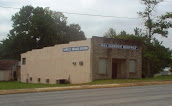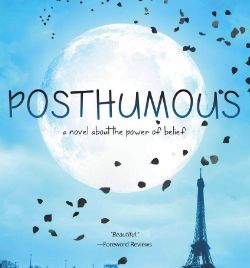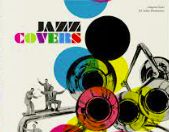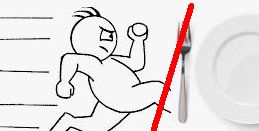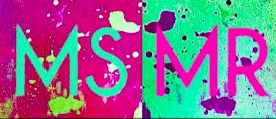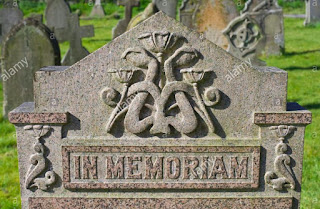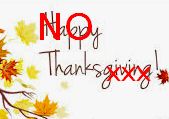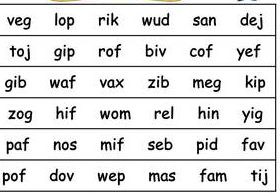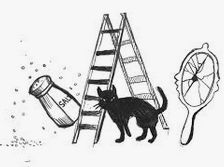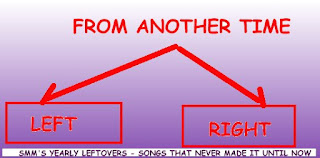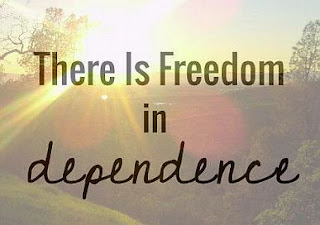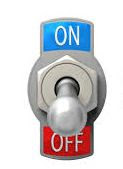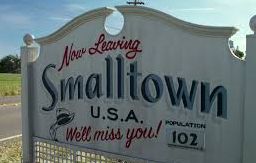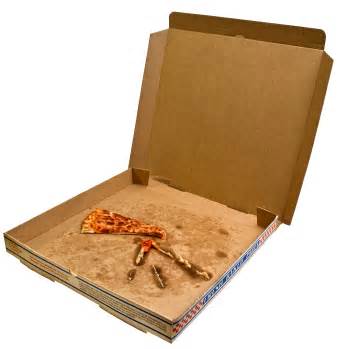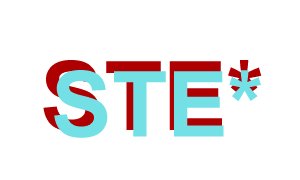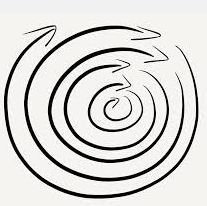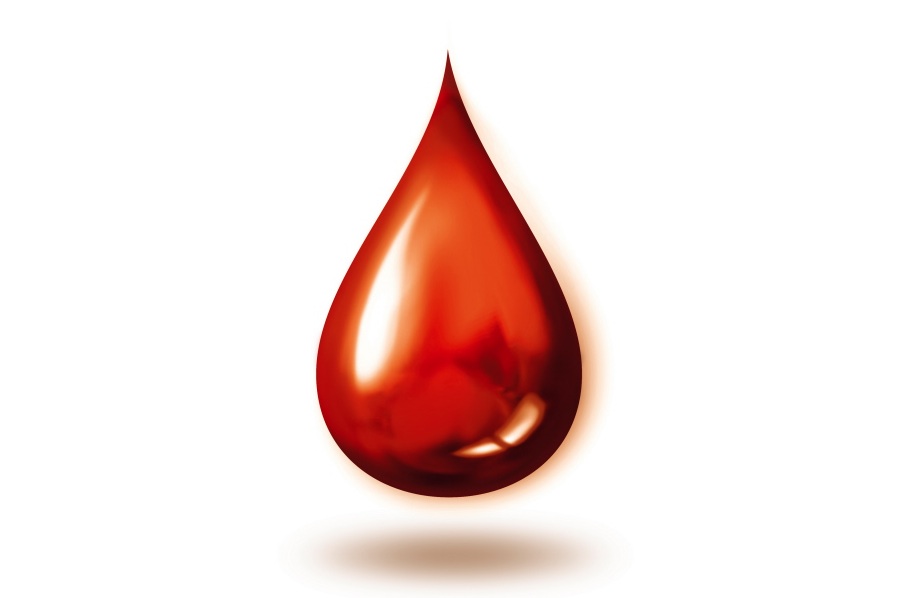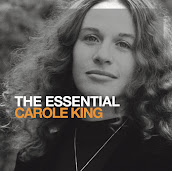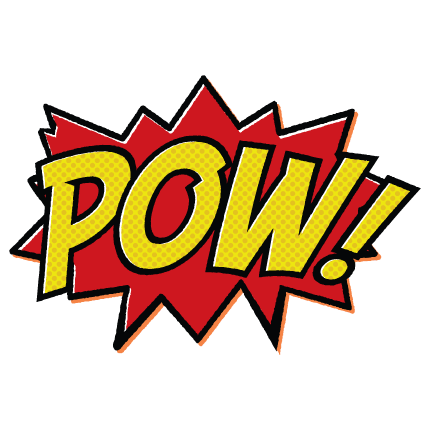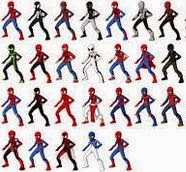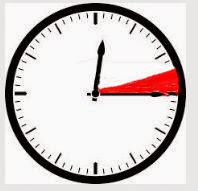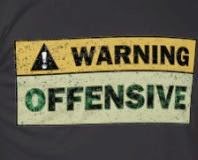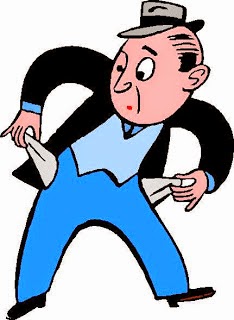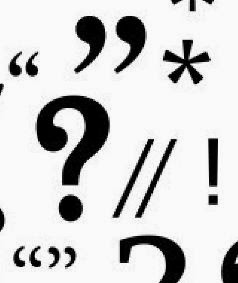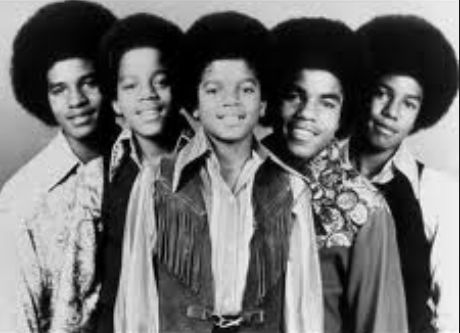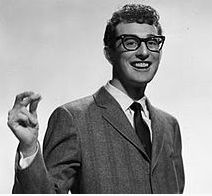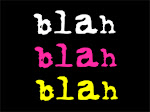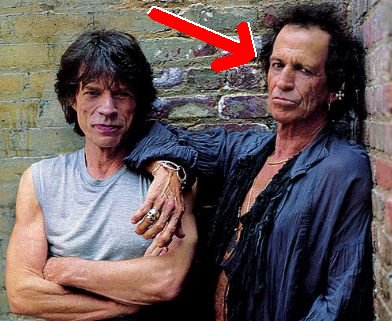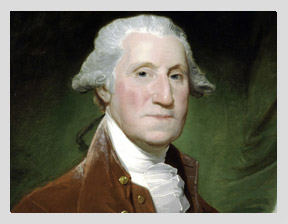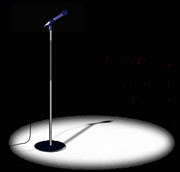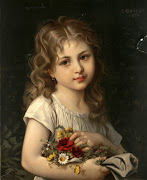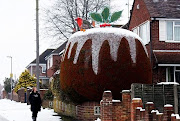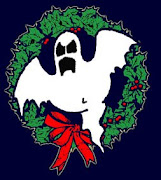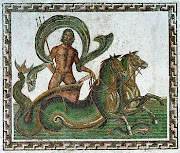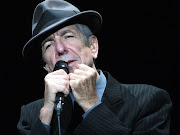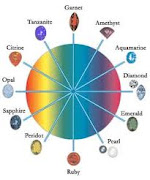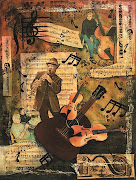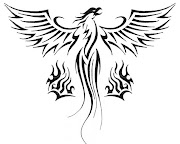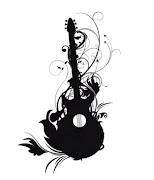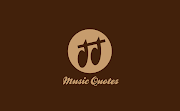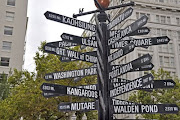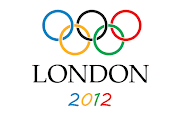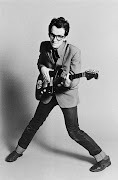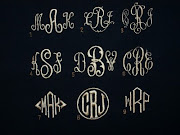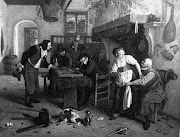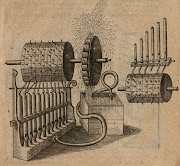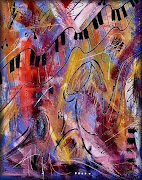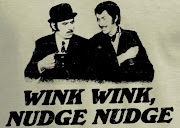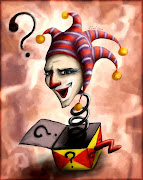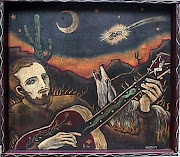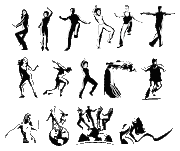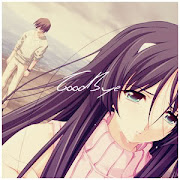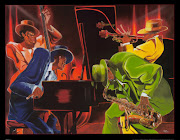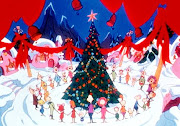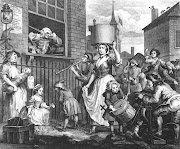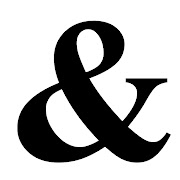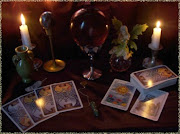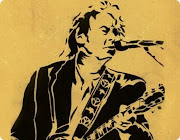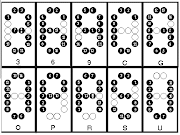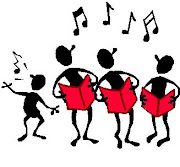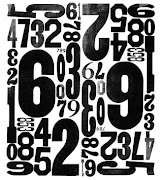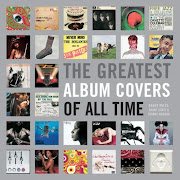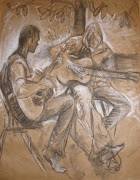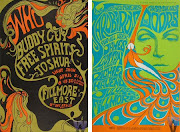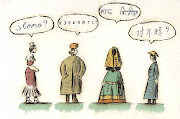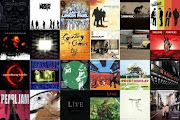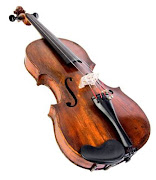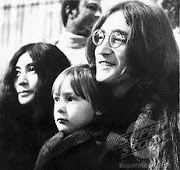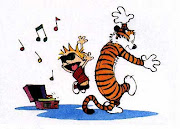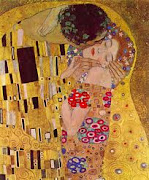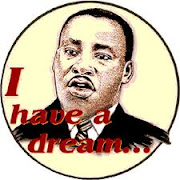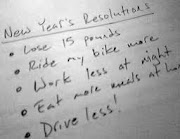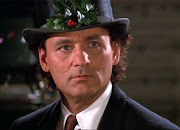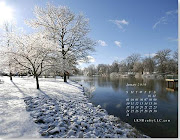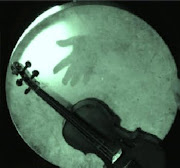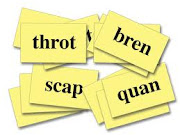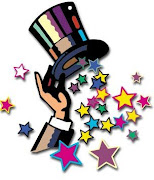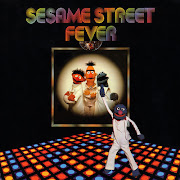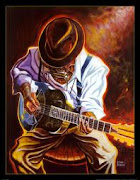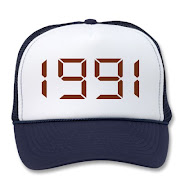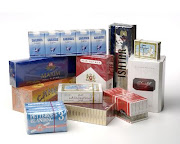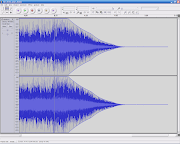Joni Mitchell: The Dawntreader
[purchase]
This week, we have looked at songs that were reimagined in cover versions. But there are also times when an artist radically reimagines their own song. Perhaps the most remarkable of these is Joni Mitchell. Over the course of her albums Both Sides Now and Travelogue, Mitchell revisited her songbook to create fully orchestrated versions of her songs. This is disconcerting enough when it happens to her later songs, which were at least done originally done with some kind of band. But The Dawntreader comes from Mitchell’s first album, and was originally arranged for just voice and acoustic guitar. Now it has a lush orchestral setting. The original had a stark quality, which is mostly gone, but amazingly enough, the intimacy of the song is preserved in the new version. The original was a dream of love in black and white. Now it’s in full color, but the dream is still very much there, now in rich detail.
Saturday, July 2, 2011
Reproductions: The Dawntreader
Posted by Darius at 11:54 PM View Comments
Labels: joni mitchell, Reproductions
Friday, July 1, 2011
Reproductions: Comfortably Hot in Herre
Scissor Sisters: Comfortably Numb (Pink Floyd cover)
[purchase]
Tiga: Hot in Herre (Nelly cover)
[purchase]
Some people can dance to anything: wind chimes, lawn mowers, ring tones. Others need the help of a strong and audible beat. These two cuts are guaranteed to have you shaking your booty in no time!
The nu-disco version of the Pink Floyd chestnut rocketed the Scissor Sisters to stardom in Europe in 2004 (they're lagging a bit in their home country, the USA). Their version was nominated for a Grammy as Best Dance Recording, and even the members of Pink Floyd have confessed that they enjoy it.
Yes, it has a high-pitched male vocalist, why do you ask?
That vocalist, Jake Shears, is featured in the cover from his buddy Tiga, a Montreal-based DJ/producer/performer. Jacking up the tempo and tossing in a lot more synthesizers has turned Nelly's hip-hop classic, Hot in Herre, into an electro-house barn burner.
Posted by Geoviki at 10:00 PM 0 comments
Labels: Reproductions, Scissor Sisters, Tiga
Reproductions: Every Little Thing

Yes: Every Little Thing
[purchase]
Some strains of psychedelia where turning into prog rock in 1969, and Yes' self-titled debut shows a band pointing towards prog. Their take on the Beatles' "Every Little Thing" follows the mold of Vanilla Fudge and the early Deep Purple, who both created such elaborate arrangements of other people's songs they were almost new songs. But where both of those bands had a tendency to slow down faster songs, Yes come out firing on all cylinders. It's a tour de force that was probably a calling card for the band in their early days.
Over the top? Yes. But you have to admit, it has an energy that matches the lyrics much better then the comparatively tame original.
Posted by FiL at 8:40 PM View Comments
Labels: Reproductions, Yes
Thursday, June 30, 2011
Reproductions: The Lounge Version
Pat Boone: Enter Sandman (Metallica cover)
[purchase]
Richard Cheese: Baby Got Back (Sir Mix-a-Lot cover)
[purchase]
Mike Flowers Pops: Velvet Underground Medley
[purchase]
Pastel Vespa: White Wedding (Billy Idol cover)
[purchase]
Bad cover songs are nothing new. While poking around some of my more horrible examples, I uncovered a multitude of 60s easy listening groups who tried to emulate the groovy sound of what those crazy kids are listening to now! We had the Four Freshmen doing Hurdy Gurdy Man in a pretty funereal style; the Lettermen butchering a Doors medley; the Johnny Mann Singers crooning an utterly soulless take on the Yardbirds' Heart Full of Soul; and an appalling adaptation of Sly and the Family Stone's Everyday People by the Ray Bloch Zombies Singers. I'm sure there are many, many more "hits" on this wall of shame. Any PBS rerun episode of the Lawrence Welk show will have at least one or two.
Deliberately bad cover songs, though, they're more recent. I'm trying to remember when I first noticed it. Maybe Bill Murray's memorable "Nick the Lounge Singer" character – his first appearance on Saturday Night Live was in 1977; his most famous cover was the Star Wars Theme (with lyrics!).
White-buck-wearing Pat Boone made his career in the 50's covering (some say "ripping off") R&B songs of black artists when radio was segregated. In 1997, he unexpectedly released In a Metal Mood: No More Mr. Nice Guy, an album of metal band covers. Needless to say, it deeply shocked his fans and got him kicked off a gospel show for a time.
Other artists began to embrace satirical stylings, blithely covering alt rock, industrial, hip-hop, metal, or grunge in a deliberately retro style – usually lounge. One well-known singer is Richard Cheese, who probably comes closest to the "Nick" sound. Mike Flowers Pops goes for that immortal Ray Bloch Singers approach, and Pastel Vespa takes it from the female angle.
Posted by Geoviki at 11:39 PM View Comments
Labels: Mike Flowers Pops, Pastel Vespa, Pat Boone, Reproductions, Richard Cheese
Reproductions: Fly Like an Eagle
Jaymz Bee & the Royal Jelly Orchestra w/ Elizabeth Shepherd: Fly Like an Eagle
[purchase, price in Canadian dollars]
In my roamings looking for music for my own blog, Oliver di Place, I have found out a little about the music scene in Toronto Canada. From what I can tell, the musicians there feel free to ignore genre boundaries, and make whatever music they feel. So it isn’t that surprising that a Toronto jazz band would consider the song Fly Like an Eagle fair game. So imagine what might have happened if the classic Miles Davis quintet heard on the album Kind of Blue had had a singer, and you will have some idea what to expect here.
As far as I can tell, Jaymz Bee is strictly a local act in Toronto. As such, you can only get this album from the American version of Amazon at a collectable price. The more economical option by far is to get the album from Amazon’s Canadian site, so that is the link I have provided. As a solo artist, singer Elizabeth Shepherd is evidently better known. Her albums can be found on the US Amazon for a reasonable price, and they are well worth seeking out.
Posted by Darius at 5:17 AM View Comments
Labels: Elizabeth Shepherd, Jaymz Bee and the Royal Jelly Orchestra, Reproductions
Tuesday, June 28, 2011
Reproductions: Let 'Em In
[purchase]
When Paul McCartney sang Let ‘Em In, he issued a roll call of family members, friends and musical inspirations. There was Sister Suzie (Linda McCartney, who once recorded as Suzie And The Red Stripes), Brother John (Linda’s sibling, John Eastman), Martin Luther (John Lennon, whom the Beatles used to call Martin Luther Lennon), Phil & Don (Everly), Brother Michael (Mike McCartney), Auntie Gin (Paul’s aunt), Uncle Ernie (Keith Moon’s character in The Who’s rock opera Tommy), and Uncle Ian (Auntie Jin's son). It’s all a bit a folky scene, even with that martial drum beat. You could bake white bread to it.
Billy Paul quickly covered the song, and gave it a bit of funkified political spice, with an urgent bassline, disco strings and insistent horns. The singer, who once alienated record execs by calling an album Am I Black Enough For You?, sets out his stall early as a recording of Malcolm X intones: “You’ve been had, you’ve been misled, you’ve been took.” We immediately develop a hunch that kindly Auntie Gin won’t get much of a look-in on this version.
In the Philly Soul man’s take, we are asked to let in a succession of black icons, not all of whom are widely known today. He seems to have a special place for Louis Armstrong, though. It’s interesting that Satchmo, often derided as an Uncle Tom figure by some people, makers it into Billy Paul’s pantheon, alongside MLK and Malcolm X. The song is interspersed with soundbites from Martin Luther King Jr, some eight years after his assassination.
Posted by Any Major Dude at 8:40 AM View Comments
Labels: Billy Paul, Reproductions
Sunday, June 26, 2011
Reproductions: Your Cheatin’ Heart
James Brown: Your Cheatin' Heart
[purchase]
Good God!
In 1969, coming off five singles with the word "popcorn" in the title, James Brown teamed up with a 20 piece big band to try a brand new bag.
‘At heart,” James told jazz writer Leonard Feather, “I’ve always been a jazz man. When I was just a kid in Macon, Ga., doing amateur shows, I went up on the stage with some of those great name bands that passed through town. I’ve never forgotten the impression those big band sounds made on me.”
With arrangements by Oliver Nelson and an orchestra led by jazz drummer Louie Bellson, JB brought his larger-than-life "soul power" to showtunes, jazz standards, a couple originals and this 1952 Hank Williams classic. Best known as a slow burning country blues ballad, "Your Cheatin' Heart" gets the full Godfather of Soul treatment with special thanks to Maceo Parker, Jr. for his incendiary sax solo. Pretty sure there isn't a version anywhere of Hank Williams singing "Can you.Gotta,Gotta,Gotta,Woah,Ow!"
Guest post by 1001 Songs
Posted by Darius at 11:56 PM View Comments
Labels: james brown, Reproductions
Reproductions: Alma Mater/Tusk
USC SoCal VoCals: Alma Mater/Tusk
[purchase]
This week features a more complicated theme than last week's; therefore, this complicated song also takes a bit of background info to appreciate its full effect.
The USC (University of Southern California) SoCal VoCals is a collegiate a cappella group, a genre growing in popularity in the US. A lot of the boom can be attributed to the switch from more sedate (read: dated) songs to pop, rock, hip-hop and other current styles more in sync with the students' usual musical preferences. In addition, a competitive annual championship drives groups to come up with more creative, complex arrangements than those other schools. This song is a great example: it's a clever mashup of old- and new-style a cappella music, with a highly structured arrangement. Also showcased is the beatboxing percussion – all human-vocalized, of course, in keeping with the non-instrumental requirements of the style. Note: this song is best heard loud!
Some of you old timers will remember what makes Fleetwood Mac's Tusk a perfect choice for this group. That 1979 platinum hit prominently featured the USC Trojan Marching Band, making that song as much a part of the school's heritage as the more traditional Alma Mater.
Incidentally, USC, a private Los Angeles university, has a cross-town rivalry with UCLA (University of California, Los Angeles). Listen for an "acknowledgement" to said rivalry in the ending lyrics.
Posted by Geoviki at 11:21 PM View Comments
Labels: Reproductions, USC SoCal VoCals
Acoustic Versions => Reproductions: Stairway to Heaven
Dolly Parton: Stairway to Heaven
[purchase]
Of course, the original Stairway to Heaven started with a folk feel, and then erupted into rock, with Robert Plant going from his calmer lower pitch singing to the screaming almost-falsetto for which he was best known. At the same time, the acoustic guitars vanish, overwhelmed by the roar of the electric ones. Result: rock classic. Dolly Parton reimagines the whole thing, and does it entirely with acoustic instruments. Now the song begins as a bluegrass ballad, and swells with arrival of a gospel choir and some intense fiddle. Parton also adds drums for the song’s climax.
For me, these different approaches yield different meanings. The Led Zeppelin original comes off as an example of mystical seventies rock. But Dolly Parton makes the song an affirmation of faith, Southern style. For sheer volume, Zep wins hands down. But for power, my vote goes to the Parton version.
Posted by Darius at 12:53 AM View Comments
Labels: Acoustic Versions, Dolly Parton, Reproductions




































